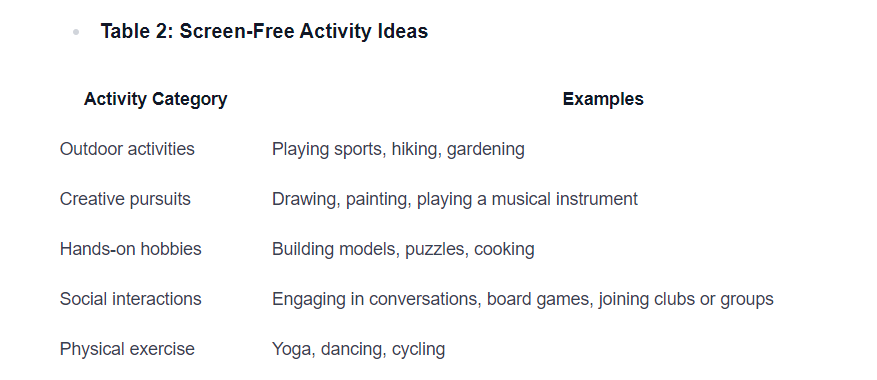Autism and Screen Time: How Are They Connected?
Unveiling the link between autism and screen time: Discover how digital devices impact individuals with autism.

Understanding Autism
To delve into the connection between autism and screen time, it is important to first understand what autism is and the common characteristics associated with it.

What is Autism?
Autism, or Autism Spectrum Disorder (ASD), is a complex developmental disorder that affects individuals in various ways. It is characterized by difficulties in social interaction, communication challenges, and repetitive behaviors. Autism is a spectrum disorder, which means that it manifests differently in each individual, with a wide range of abilities and challenges.
While the exact cause of autism is still unknown, it is believed to be a combination of genetic and environmental factors. It typically appears in early childhood, and symptoms can vary in severity. Early diagnosis and intervention are crucial in helping individuals with autism thrive and reach their full potential.
Common Characteristics of Autism
Individuals with autism may exhibit a variety of characteristics that can impact their daily lives. These characteristics can include:
- Social Communication Challenges: Difficulties in verbal and non-verbal communication, challenges in understanding and using language effectively, and difficulty interpreting social cues and emotions.
- Repetitive Behaviors and Restricted Interests: Engaging in repetitive movements or behaviors, following strict routines, and showing intense interest in specific topics or objects.
- Sensory Sensitivities: Heightened sensitivity or aversion to certain sensory stimuli, such as noise, bright lights, or certain textures.
- Difficulty with Transitions: Struggling with changes in routine or transitioning between activities, which can result in anxiety or meltdowns.
- Motor Coordination Challenges: Difficulties with fine and gross motor skills, such as handwriting or participating in sports.
- Cognitive Differences: Varied cognitive abilities, ranging from intellectual disability to above-average intelligence.
It's important to note that each individual with autism is unique, and their experiences and challenges will differ. Understanding these common characteristics is essential in comprehending the potential impact of screen time on individuals with autism.
The Rise of Screen Time
As digital devices become increasingly prevalent in our society, the amount of time people spend engaging with screens has significantly increased. This rise in screen time has sparked interest and concern about its potential impact on various aspects of our health and well-being. One area of interest is the potential connection between screen time and autism.
The Impact of Digital Devices on Society
Digital devices, such as smartphones, tablets, computers, and televisions, have become integral parts of our daily lives. They provide us with access to information, entertainment, and social connections. However, the extensive use of these devices has raised questions about their effects on our physical and mental health.
The impact of digital devices on society is multifaceted. On one hand, they offer numerous benefits, such as increased access to education and communication. On the other hand, excessive screen time has been associated with various negative effects, including sedentary behavior, decreased physical activity, and disrupted sleep patterns.
Exploring the Connection Between Autism and Screen Time
The relationship between autism and screen time is a topic of ongoing research and debate. Autism, a neurodevelopmental disorder, is characterized by challenges in social interaction, communication, and repetitive behaviors. Some studies have examined whether there is a link between the two, but the findings have been inconsistent.
Research exploring the connection between autism and screen time has focused on several factors. These include the potential impact of screen time on sensory processing, social interaction, communication skills, and sleep patterns. While some studies have suggested a correlation between excessive screen time and increased autism symptoms, others have found no significant association.
It is important to note that autism is a complex condition with various causes and contributing factors. Screen time alone cannot be considered a direct cause of autism. Instead, it is more appropriate to view screen time as one potential factor that may interact with other genetic and environmental influences.
Understanding the relationship between autism and screen time requires further investigation and careful consideration of various factors. Researchers continue to explore this topic to gain a clearer understanding of the potential connections and implications.
Research Findings
As the use of digital devices becomes increasingly prevalent in our society, researchers have been examining the potential link between autism and screen time. While studies have explored this connection, it is important to consider the various factors involved in the research.
Studies Investigating the Link Between Autism and Screen Time
Several studies have been conducted to investigate the relationship between autism and screen time. These studies aim to determine whether excessive or early exposure to digital devices may contribute to the development or severity of autism spectrum disorder (ASD).

These studies present different perspectives on the relationship between autism and screen time. While some suggest a potential association, others indicate that screen time may not be a direct causative factor.
Factors to Consider in the Research
When interpreting the research findings, it is crucial to consider various factors that may influence the relationship between autism and screen time.
- Individual Differences: Each child with ASD is unique, and their response to screen time may vary. Factors such as age, cognitive abilities, and sensory sensitivities can influence how a child engages with digital devices.
- Screen Content: The type of content consumed during screen time can play a role in its impact. Educational and interactive content may have different effects compared to passive entertainment or repetitive activities.
- Parental Involvement: The level of parental involvement and guidance during screen time can influence its potential effects. Active participation, setting appropriate limits, and encouraging balanced activities can mitigate any negative consequences.
- Other Environmental Factors: It's important to consider other environmental factors that may contribute to the development or severity of autism, such as genetic predispositions, prenatal influences, and social interactions.
While research provides valuable insights into the potential link between autism and screen time, it is essential to approach it with caution. Further studies are needed to establish a clear understanding of the relationship and to identify any potential risk factors.
In the next section, we will explore potential explanations that researchers have proposed for the observed associations between autism and screen time. By understanding these explanations, we can gain a more comprehensive view of the complex relationship between autism and digital devices.
Potential Explanations
While the exact relationship between autism and screen time is still being explored, several potential explanations have been proposed. These explanations provide insights into how screen time may affect individuals with autism.
Overstimulation and Sensory Processing
Individuals with autism often experience sensory sensitivities and may be more susceptible to overstimulation. Digital devices, with their screens emitting bright lights, fast-moving images, and constant audio stimulation, can contribute to sensory overload. This overstimulation may lead to increased anxiety, irritability, and difficulty focusing for individuals with autism.
Overstimulation and Sensory Processing
Increased anxiety
Irritability
Difficulty focusing
Social Interaction and Communication Challenges
Autism is characterized by social interaction and communication challenges. Excessive screen time may further hinder the development of these critical skills. Spending excessive time on digital devices reduces opportunities for face-to-face communication and social interaction, which are essential for individuals with autism to learn and practice social skills.
Limiting screen time and encouraging alternative forms of communication and social engagement can help individuals with autism develop and strengthen their social and communication abilities.
Disrupted Sleep Patterns
Sleep disturbances are commonly observed in individuals with autism. Excessive screen time, especially in the evening, can interfere with the natural sleep-wake cycle, making it more difficult for individuals with autism to fall asleep and maintain quality sleep.
The blue light emitted by screens can suppress the production of melatonin, a hormone that regulates sleep. This can lead to difficulties in falling asleep, restless sleep, and daytime sleepiness. It is crucial to establish healthy sleep habits and limit screen time before bedtime to promote better sleep in individuals with autism.
By understanding these potential explanations, we can begin to comprehend the complex relationship between autism and screen time. It is important to approach screen time with moderation and balance, ensuring that individuals with autism have access to appropriate supports and interventions to mitigate any potential negative effects.
Promoting Healthy Screen Time Habits
In order to maintain a healthy relationship with digital devices and promote overall well-being, it is important to establish healthy screen time habits. By setting limits, engaging in screen-free activities, and balancing digital engagement with other interests, individuals can ensure a balanced approach to their screen time.
Setting Limits and Establishing Routines
Setting limits and establishing routines around screen time can help individuals, including those with autism, manage their usage effectively. It is recommended to establish clear guidelines and boundaries regarding the duration and purpose of screen time. This can be achieved through the following strategies:

- Create a technology schedule: Plan specific times for screen use, such as designating certain hours for educational purposes or entertainment.
- Use parental controls: Utilize parental control features to limit access to certain apps or websites, ensuring that screen time is used appropriately.
- Encourage breaks: Encourage regular breaks during screen time to engage in physical activity, social interactions, and other non-screen activities.
Engaging in Screen-Free Activities
Engaging in screen-free activities is essential for promoting a well-rounded lifestyle and reducing excessive reliance on digital devices. Encouraging individuals, especially those with autism, to participate in alternative activities can have numerous benefits. Here are some ideas for screen-free activities:

Encouraging individuals to explore these activities not only provides a break from screens but also promotes social interaction, creativity, and physical well-being.
Balancing Digital Engagement with Other Interests
Finding a balance between digital engagement and other interests is crucial for individuals, including those with autism, to lead a well-rounded and fulfilling life. It is important to encourage individuals to explore a variety of hobbies, interests, and activities beyond digital devices. This can be achieved by:
- Encouraging diverse interests: Support individuals in exploring different hobbies and interests that align with their preferences and abilities.
- Setting aside designated screen-free time: Designate specific time periods each day or week dedicated solely to non-digital activities.
- Encouraging social interactions: Foster social connections through activities that involve face-to-face interactions, such as joining clubs, participating in community events, or volunteering.
By encouraging a healthy balance between digital engagement and non-digital activities, individuals can maintain a well-rounded lifestyle and minimize the potential negative effects of excessive screen time.
Promoting healthy screen time habits is essential for individuals, including those with autism, to thrive in the digital age. By setting limits, engaging in screen-free activities, and maintaining a balance between digital and non-digital interests, individuals can ensure a healthy and well-rounded approach to their screen time.
Sources
https://www.autismparentingmagazine.com/screen-time-kids-with-asd/
https://www.ncbi.nlm.nih.gov/pmc/articles/PMC10442849/
https://www.earth.com/news/toddler-screen-time-linked-to-atypical-sensory-behaviors/
Similar articles
We’re here to help you

Our team is here to assist you in this process. Contact us for any assistance.
it’s easy to apply
We Accept Most Insurances
Our in-network insurance partnerships make ABA therapy more accessible to families throughout our service areas.







Our Insurance Process
We'll request your insurance details to help us verify your plan's coverage for ABA therapy. Once we've received this information, we'll walk you through your benefits, including copayments, deductibles and out-of-pocket maximums, so you know what to expect in advance.
Our team will then handle the preauthorization and all the necessary paperwork.
.svg)





















.jpeg)


































.jpeg)




.jpeg)







.jpeg)











.jpeg)
















